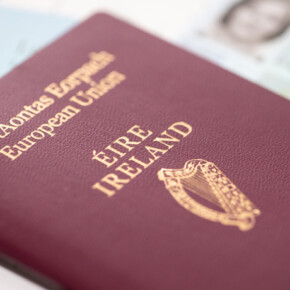Remembering the Irish Socialist Republican Party
Dublin People 05 Jun 2015LONG before his association with the Irish Transport and General Workers’ Union (ITGWU) or the Irish Citizen Army, James Connolly established an important, yet relatively forgotten political party in Ireland.
That party was known as the Irish Socialist Republican Party (ISRP) and was founded in May 1896 at a public meeting in Pierce Ryan’s public house at 50 Thomas Street in Dublin.
The ISRP has the honour of being the first avowedly republican political party in modern Ireland and the demand for an independent Irish Republic was a central piece of the new party’s platform.
This was a radical move on Connolly’s behalf, coming at a time when the majority of Irish nationalists supported the Home Rule Movement and a long time before the idea of a Republic was popular on a mass scale. The ISRP was also the first party in Irish history to promote the idea of
‘socialist republicanism’, a political ideology which views the national and social struggles in Ireland as the one fight. Socialist republicanism is probably best summed up by Connolly’s famous maxim:
“The cause of Labour is the cause of Ireland; the cause of Ireland is the cause of Labour. They cannot be dissevered
?.
With Connolly at the helm, as a full-time paid organiser, a headquarters was opened at 67 Middle Abbey Street and the party soon began its political activism.
It organised regular public meetings across Dublin at venues including the Custom House, the fountain in James’s Street, Forster Place and the Phoenix Park.
In September 1896 the party issued its first political manifesto. Written by Connolly, the manifesto declared that the objective of the ISRP was the
“establishment of an Irish Socialist Republic
?.
The party’s political programme called for a 48-hour working week and the establishment of a minimum wage along with the nationalisation of railways and canals, the abolition of private banks, the free maintenance of children, free education up to university and universal suffrage.
The ISRP also launched a weekly socialist newspaper, The Worker Republic, with Connolly as editor.
The paper was based at Connolly’s home, 54 Pimlico in the rebel Liberties and was used to spread the party’s message across the country. Attempts were soon made to establish branches in a number of towns and cities including Cork, Belfast, Limerick and Naas, as well as in Northern England, but the party remained strongest in Dublin.
Despite these early successes, it is believed that membership of the ISRP never exceeded 100 people and the party remained peripheral.
Its members were constantly harassed by the Catholic Church and the Irish Parliamentary Party who were hostile to the idea of socialist republicanism.
By 1903, financial difficulties and internal disagreements led to a split in the party which reduced its small membership even further.
This made it even more difficult for the ISRP to come up with the wages owed to James Connolly and his family slipped further into poverty.
Left with no other option to provide for his family, he was forced to leave Ireland.
Connolly emigrated to America and later compared the demise of the ISRP to the
“loss of a child
?.
Historians agree that Connolly’s ISRP was ahead of its time.
The party had a major influence on later Irish politics and our struggle for freedom.
With Connolly’s return to Ireland in 1910, socialist republicanism began to grow again and the radical politics of the ISRP found pride of place as the centre platform of the 1916 Proclamation and the democratic programme of the first Dáil.











